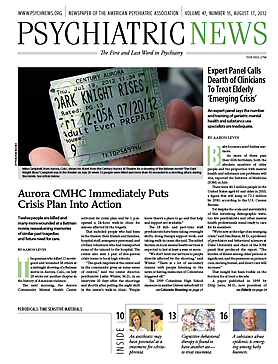Despite a dearth of literature on treatment of gender identity disorder in children and adolescents—as well as a wide range of opinions and some degree of controversy—recommendations from APA based on several areas of consensus can be helpful to clinicians.
That was the finding of the Task Force on Treatment of Gender Identity Disorder whose report appears in the August American Journal of Psychiatry.
For children under 12, the task force found no randomized or adequately controlled nonrandomized longitudinal studies and very few follow-up studies without a control group either with or without an intervention. The majority of available evidence is derived from qualitative reviews and experimental systematic single-case studies that do not fit into the APA evidence grading system, the task force stated in its report.
Despite these deficiencies, areas the task force found that support development of consensus recommendations include the following:
Assessment and accurate DSM diagnosis of the child referred for gender concerns, including the use of validated questionnaires and other validated assessment instruments to assess gender identity, gender role behavior, and gender dysphoria.
Diagnosis of possibly coexisting psychiatric conditions.
Identification of mental health concerns in the caregivers and difficulties in their relationship with the child.
Provision of adequate psychoeducation and counseling to caregivers.
Provision of age-appropriate information to the child.
Assessment of the safety of the family, school, and community environments in terms of bullying and stigmatization related to gender atypicality and addressing suitable protective measures.
Task force member Edgardo Menvielle, M.D., noted that gender dysphoria in very young children is especially complex. “We know that young kids who express gender dysphoria or gender-variant behavior are not necessarily transgender,” he told Psychiatric News. “There is a subset of those children who will grow up to be transgender, but also a larger proportion who will not. That is one of the clinical quandaries that a child psychiatrist must face because we do not have the tools to predict the adult outcome of gender dysphoria in young children.”
A similar lack of studies was found with regard to adolescents. Database searches failed to reveal any randomized, controlled trials, with the quality of the evidence primarily limited to individual case reports, follow-up studies with control groups of limited utility and without random assignment, and longitudinal follow-up studies after an intervention without control groups.
But consensus recommendations for treatment of adolescents might address the following: psychological and psychiatric assessment and diagnosis of adolescents presenting with a wish for sex reassignment, assessment of indications and readiness for suspension of puberty and/or cross-sex hormones as well as provision of documentation to specialists in other disciplines involved in caring for the adolescent, psychoeducation of family members, and assessment of the safety of the family/school/community environment in terms of bullying and stigmatization.
Menvielle told Psychiatric News that one treatment for early adolescents around which there is an emerging database—largely from Toronto and the Netherlands—is the use of pubertal suspension. He explained that the therapy involves a pharmacologic intervention at an early stage of puberty to prevent the development of secondary sex characteristics and to provide time for the child, parents, and clinician to decide whether to institute cross-sex hormone treatment.
“We want APA members and other clinicians to be aware that the treatment exists, and that child and adolescent psychiatrists have a role in this therapy,” he said.
The report notes that between 2001 and 2009, more than 80 adolescents had been treated with pubertal suspension “with overall positive results in the most detailed follow-up study published to date.” A practice guideline developed by the Endocrine Society suggests that pubertal suspension can be done for a period of up to several years “during which time the patient, with the clinician, can decide whether it is preferable for the adolescent to revert to living in the birth sex or to continue gender transition with cross-sex hormone therapy,” according to the report.
“Most clinicians who treat transgender patients understand that the goal of treatment is not to attempt to change the gender identity but to provide whatever the patients need to express their gender identity in a way that makes sense to them and helps them lead productive and fulfilling lives,” Menvielle said.

